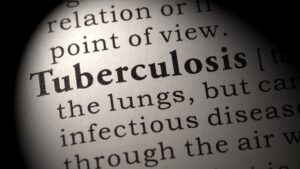
Tuberculosis (TB), caused by the bacterium Mycobacterium tuberculosis, is a potentially serious infectious disease that primarily affects the lungs, but can also affect other parts of the body.
TB is spread through the air when an infected person coughs or sneezes, making it highly contagious. In this blog post, we will discuss the transmission, symptoms, diagnosis, treatment, and prevention of TB.
Transmission:
TB is primarily spread through the air when an infected person coughs or sneezes, releasing tiny droplets containing the bacteria into the air. These droplets can be inhaled by others, allowing the bacteria to enter the lungs and infect the person.
TB is most commonly spread in crowded, poorly ventilated areas where people spend a lot of time close together, such as hospitals, prisons, and homeless shelters.
Symptoms:
The symptoms of TB can vary depending on the location and severity of the infection.
Common symptoms of pulmonary TB include a persistent cough that lasts three weeks or longer, chest pain, coughing up blood or sputum, fatigue, weight loss, fever, and night sweats.
TB that affects other parts of the body, known as extrapulmonary TB, can cause symptoms such as swollen lymph nodes, joint pain, and
back pain.
Diagnosis:
Diagnosing TB can be challenging, as the symptoms are similar to those of other respiratory diseases. To diagnose TB, healthcare providers may perform a physical exam, order a chest X-ray, and collect a sputum sample for testing.
Sputum samples are examined under a microscope to look for the presence of the bacteria, and may also be cultured to grow the bacteria for further testing. Blood tests and skin tests, such as the tuberculin skin test (TB test), may also be used to diagnose TB.
Treatment:
TB is typically treated with a combination of antibiotics taken for six to nine months. The most common antibiotics used to treat TB are isoniazid, rifampin, ethambutol, and pyrazinamide.
Treatment must be followed exactly as prescribed by a healthcare provider, even if symptoms improve before the course of antibiotics is completed.
Failure to complete the full course of treatment can lead to drug-resistant TB, which is much more difficult to treat.
Prevention:
Preventing the spread of TB is critical in controlling the disease.
Some key prevention strategies include:
1. Vaccination: The Bacillus Calmette-Guérin (BCG) vaccine is a live attenuated vaccine that can help protect against severe forms of TB in children. However, the vaccine is not widely used in the United States due to low rates of TB.
2. Screening: Screening for TB can help identify and treat cases early, before the disease spreads to others. High risk populations, such as healthcare workers and individuals living in congregate settings, should be
screened regularly for TB.
3. Infection control: Proper ventilation, isolation of confirmed TB cases, and the use of personal protective equipment can help prevent the spread of TB in healthcare settings and other high-risk environments.
4. Education: Educating the public about the importance of TB prevention, symptoms, and treatment can help reduce the spread of the disease and improve outcomes for individuals who are affected. In conclusion, TB is a serious respiratory disease that can be challenging to diagnose and treat. Understanding the transmission, symptoms, diagnosis, treatment, and prevention of TB is important in controlling the spread of the disease and improving outcomes for individuals affected.
By following proper infection control measures, getting vaccinated, and seeking prompt medical attention for symptoms of TB, we can work together to reduce the burden of this infectious disease.